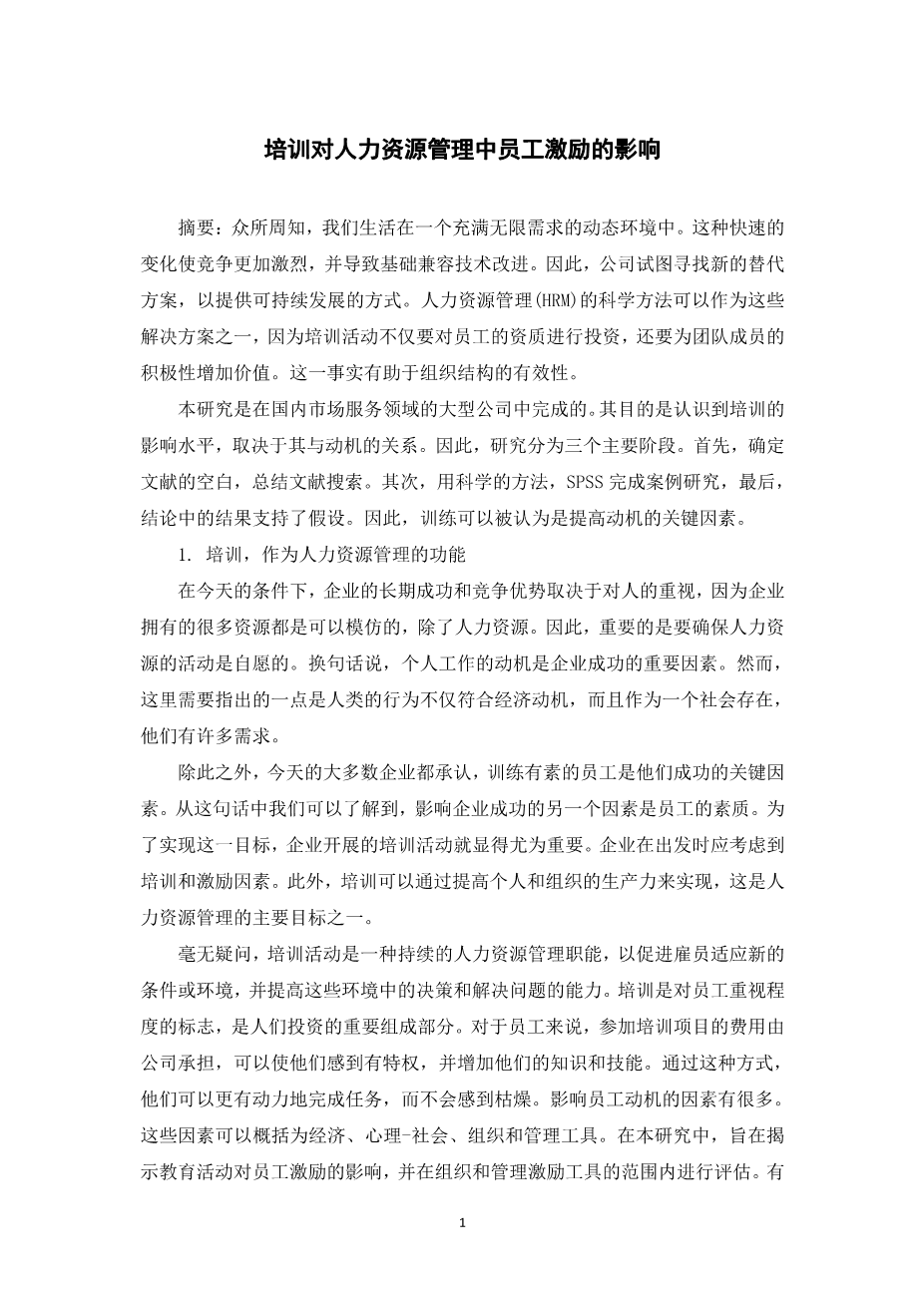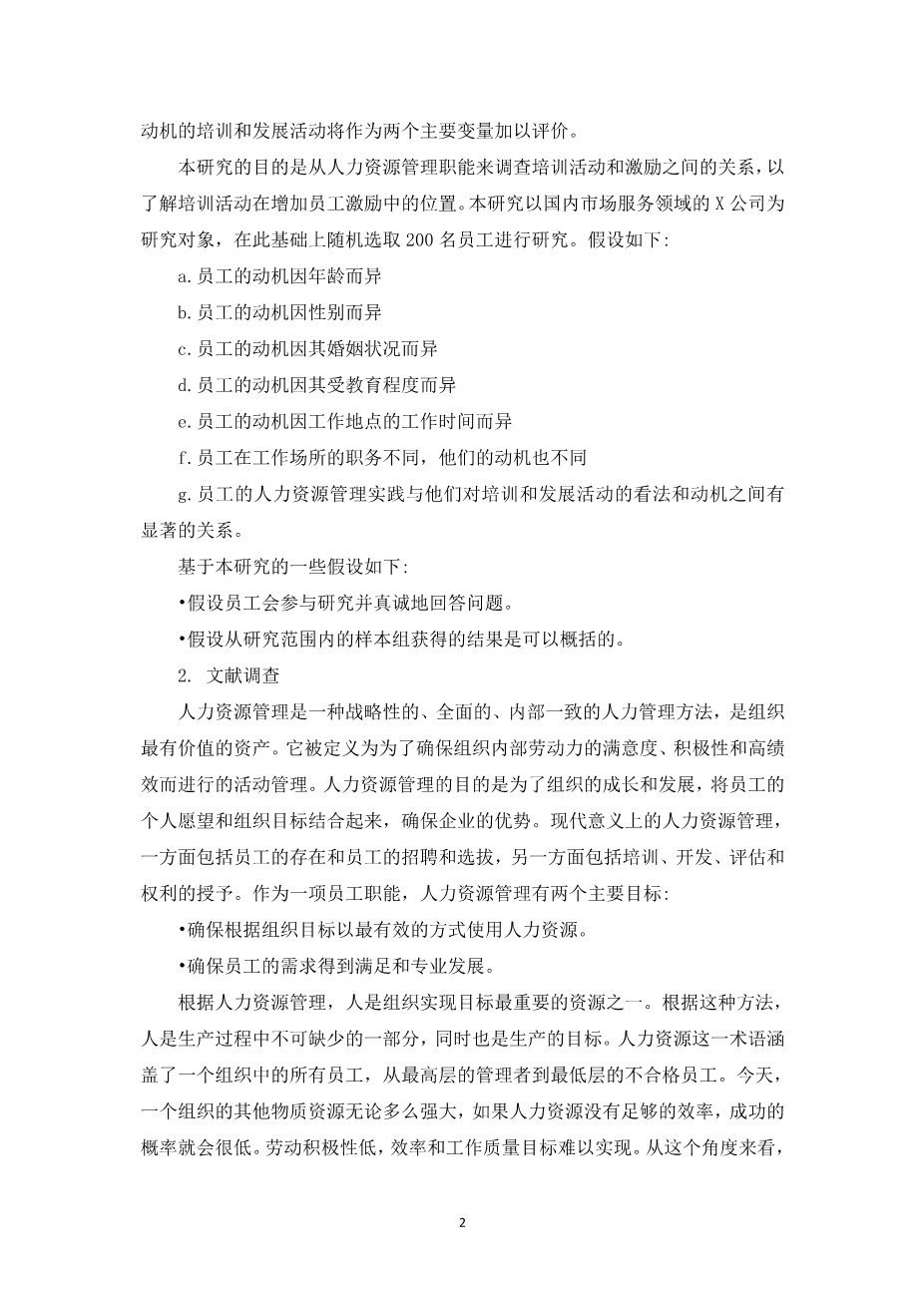Impact of training on employee
motivation in human resources managemen
Banu Ozkeser
Abstract
Itrsquo;s a well-known fact that we are living in a dynamic environment full of unlimited demands. This rapid change makes the competition be stronger and leads the foundations compatible on technological improvement. Thus, companies try to find new alternatives so as to provide sustainable ways among others. Scientific approaches in human resources management (HRM) can be taken into account as one of these solutions because training activities not only invest in the qualifications of employees but also add value to the motivation of the team players. This fact helps the effectiveness of the organizational structure.
This study is completed in a big scale company on the service field for the domestic market. The aim is to recognize the impact level of the training, depending on its relation with motivation. Hence, the study is divided into three main phases. In the first step, the gaps of the literature are determined and the literature search is summarized. Secondly, the case study is completed with the scientific approach, SPSS and in the final step, results in the conclusion support the hypothesis. Therefore, training can be thought as a key player for improving the motivation.
1. Training, as a function of HRM
In todays conditions, long-term success and competitive advantage of enterprises depend on giving importance to human because many of the resources owned by enterprises can be imitated, except for human resources. Therefore; it is important to ensure that human resources do their activities voluntarily. In other words, the motivation of individuals to work is an important factor in the success of the enterprise. However, the point to be noted here is that human beings do not act only in line with economic motives and that they have a number of needs as a social being.
In addition to this, most of todays enterprises acknowledge that well-trained staff is a critical success factor for them. As it is understood from this statement, another factor affecting the success of the enterprises is the well-equipped employees. In order to achieve this, the training activities carried out in enterprises are of great importance. Businesses at the point of departure should take into account training and motivation factors. Furthermore, training can be
achieved by increasing individual and organizational productivity, one of the main objectives of human resources management.
Undoubtedly, training activities are a continuous human resources management function to facilitate the adaptation of employees for new conditions or environments, and also to increase decision-making and problem-solving capabilities in these environments. Training is an indicator of the importance given to the employees and constitutes an important wing of the investments made by people. In terms of employees, participation in training programs, of which expenses are covered by companies, can enable them to feel privileged and to increase their knowledge and skills. In this way, they can perform their tasks more motivated without feeling lacking.
There are many factors that affect employees motivations. These can be summarized as economic, psycho-social and organizational and managerial tools. In this study, it is aimed to reveal the effects of educational activities on employee motivation which are evaluated within the scope of organizational and managerial motivation tools.
Training and development activities with motivation will be evaluated as two main variables.
The aim of this study is to investigate the relationship between training activities and motivation from human resources management functions in order to understand the place of training activities in increasing the motivation of the personnel.This research is studied in X company on the service field for the domestic market with 200 employees of this foundation, chosen by random method. Hypotheses are written below:
a. The motivations of the personnel vary according to their age
b. The motivations of the personnel vary according to their gender
c. The motivations of the personnel vary according to their marital status
d. The motivations of the personnel vary according to their educational status
e. The motivations of the personnel vary according to the working hours in the workplace
f. The motivations of the personnel vary according to their titles in the workplace
g. There is a significant relationship between the human resources management practices of employees and their perceptions and motivations for training and development activities.
Some assumptions based on this research are as follows:
bull; It is assumed that employees will participate in the research and answer the questions sincerely.
bull; It is assumed that the results obtained from the sample group within the scope of the research can be generalized.
2. Literature Survey
Human resource management is a strategic, comprehensive and internally consistent approach to human management, the most valuable asset of the organization. It is defined as the management of activities in order to ensure the satisfaction, motivation and high performance of the labor force within the organization. Human resources management aims to ensure the superiority of the enterprise by combining the individual wishes and organizational goals of the employees for the growth and development of the organization . In the modern sense, human resources management includes the presence of staff and the recruitment and selection of employees, on the other hand, training, development, evaluation and granting of rights . As a staff function, HRM has two main objectives :
bull; to ensure that human resources are used in the most efficient ma
剩余内容已隐藏,支付完成后下载完整资料


英语译文共 13 页,剩余内容已隐藏,支付完成后下载完整资料
资料编号:[602588],资料为PDF文档或Word文档,PDF文档可免费转换为Word


